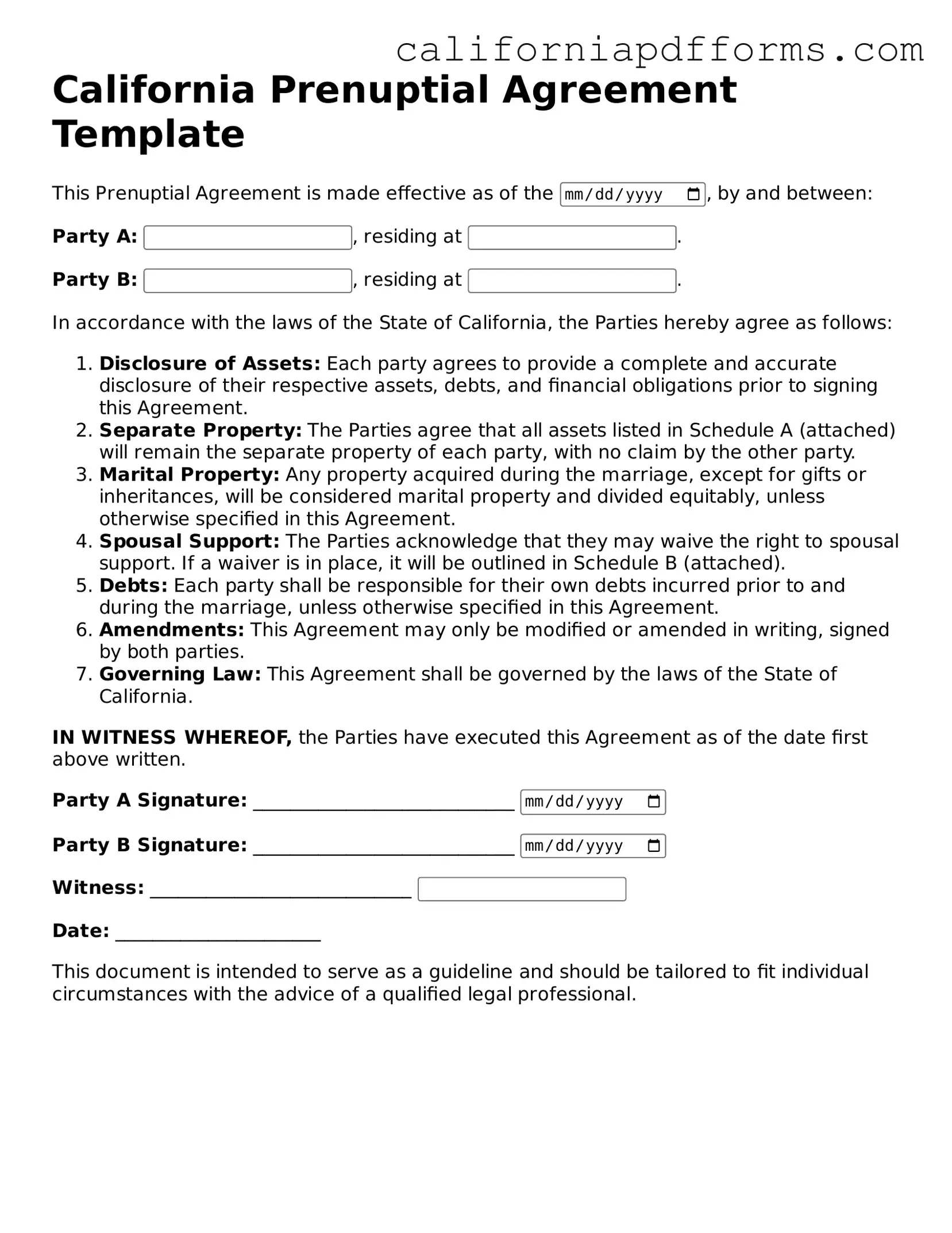What is a prenuptial agreement in California?
A prenuptial agreement, often called a prenup, is a legal contract between two individuals before they get married. It outlines the division of assets and financial responsibilities in the event of divorce or separation. In California, this agreement can help protect individual property and clarify financial rights.
Why should I consider a prenuptial agreement?
Considering a prenup can provide peace of mind. It allows couples to discuss financial matters openly and set expectations for their marriage. Key reasons to consider a prenup include:
-
Protection of individual assets acquired before marriage.
-
Clarification of financial responsibilities during the marriage.
-
Reduction of potential conflicts in the event of divorce.
-
Protection of family inheritances or business interests.
How do I create a prenuptial agreement in California?
Creating a prenuptial agreement involves several steps:
-
Discuss your financial situation and goals with your partner.
-
Draft the agreement, ensuring it covers all necessary aspects.
-
Both parties should seek independent legal advice to understand their rights.
-
Sign the agreement before the wedding date.
What can be included in a prenuptial agreement?
A prenup can include various provisions, such as:
-
Division of property and debts.
-
Spousal support or alimony arrangements.
-
Management of joint finances.
-
Protection of business interests or intellectual property.
Are prenuptial agreements enforceable in California?
Yes, prenuptial agreements are generally enforceable in California, provided they meet certain legal requirements. These include:
-
Full disclosure of assets and debts by both parties.
-
Voluntary signing without coercion.
-
Fair and reasonable terms at the time of signing.
Can a prenuptial agreement be modified after marriage?
Yes, a prenuptial agreement can be modified after marriage. Both parties must agree to the changes, and the modifications should be documented in writing and signed by both individuals. It’s advisable to consult with legal professionals during this process.
What happens if we don’t have a prenuptial agreement?
If a couple does not have a prenuptial agreement, California's community property laws will govern the division of assets and debts in the event of divorce. This means that most property acquired during the marriage will be considered jointly owned, which may not align with the couple's intentions.
